NAVYPEDIA
 Support the project with paypal
Support the project with paypal
Ships
| No | Name | Yard No | Builder | Laid down | Launched | Comm | Fate |
|---|---|---|---|---|---|---|---|
| CVA58 | United States | 486 | Newport News | 18.4.1949 | --- | --- | cancelled 23.4.1949 |
Technical data
| Displacement standard, t | 66434 |
|---|---|
| Displacement full, t | 83249 |
| Length, m | 314.0 wl 331.7 oa |
| Breadth, m | 38.1 wl 57.9 ext |
| Draught, m | 10.5 trials |
| No of shafts | 4 |
| Machinery | 4 sets geared steam turbines, 8 boilers |
| Power, h. p. | 280000 |
| Max speed, kts | 33 |
| Fuel, t | oil |
| Endurance, nm(kts) | 12000(20) |
| Armour, mm | belt: 37, hangar sides: 19+16, torpedo bulkhead: 32, bulkheads: 19, flight deck: 51, hangar deck: 38, protective deck: 76 - 38 |
| Armament | 8 x 1 - 127/54 Mk 39, 6 x 2 - 76/70 Mk 37, 20 x 1 - 20/70 Mk 10, 98 aircraft (18 ADR-62 bombers, 80 F2H-1 fighters) |
| Electronic equipment | SPS-6, SPS-8, 4x SPG-53 radars |
| Complement | 4127 |
Air group
| Year | Fighters | bombers |
|---|---|---|
| as designed | 50 F2H-1 | 18 ADR-64A |
Standard scale images

United States
Aircraft facilities
(fd - 10,800 m², ha - 8,978 m² / 76,765 m³): Flight deck: 320.0 x 61.2 m. Hangar: 261.0 x 34.4 x 8.55 m. There were 3 deck-edge elevators (45.4t, 18.3 x 18.3m) and stern centre-line elevator (45.4t, 19.2 x 15.8m). There were 4 H 9 catapults. Aircraft fuel stowage: 1 890 000 l. Aviation ordnance stowage was 2000t.
Project history
Although she was never completed, United States is significant in the course of US carrier development as the progenitor of the Forrestal and their successors. Unlike earlier carriers, she was designed specifically to operate a particular class of aircraft, in her case heavy attack planes intended for strategic nuclear operations. Indeed, the earliest proposals were for a carrier without any hangar at all, because the aircraft would be much too large to strike below. Only well into the design were non-strategic roles considered, and indeed United States would have had smaller magazines than the later, multi-mission, Forrestals. It appears that the hangar was originally included largely to house the fighter escorts for the heavy bombers. Much attention went into flight deck arrangement, the ship being intended to launch two bombers and two fighters simultaneously from a pair of bow catapults and a pair of waist catapults splayed out to each beam. Steam catapults had not yet been invented, and she was to have had a new type of internal-combustion cylindrical catapult, which was also originally specified for the Forrestals. A fully flush deck would have simplified flight operations, and her arrangement was to have been superficially similar to that of the later angled deck ships. However, the arrangement of arresting gear would have precluded the simultaneous launch and recovery operations which are the hallmark of the angled deck carrier.
It appears that four ships in all were contemplated, and that later units might have had nuclear power. Certainly smoke disposal from a large flush deck carrier was considered a major and intractable issue. United States herself was laid down at Newport News on 19 April 1949, but the Air Force charged that the new carrier would merely duplicate its strategic mission, at а cost of $500m (against a Navy estimate of $189m] and construction was stopped on 23 April, the funds being transferred to the Air Force for bombers. The ensuring fight resulted in one of the Navy's worst peacetime disasters; heavy attack aircraft were restricted to dimensions dictated by the wartime Midway class. The major postwar jet heavy attack bomber, the A3D was designed at this time. Only the Korean War brought back the Navy's carrier programme.
Ship protection
Horizontal protection would be consisted of 4 decks: 51mm flight deck, 25mm gallery deck, 37mm hangar deck and 37mm main deck. Vertical protection included high 37mm belt expanded to the hangar deck; hangar was protected by 19mm outer and 16mm inner sides. Underwater protection included 5 longitudinal bulkheads (including one 32mm) and can resist from exploding of 545-680kg TNT.
 HOME
HOME FIGHTING SHIPS OF THE WORLD
FIGHTING SHIPS OF THE WORLD UNITED STATES OF AMERICA
UNITED STATES OF AMERICA AIRCRAFT CARRYING SHIPS
AIRCRAFT CARRYING SHIPS UNITED STATES attack aircraft carrier
UNITED STATES attack aircraft carrier
